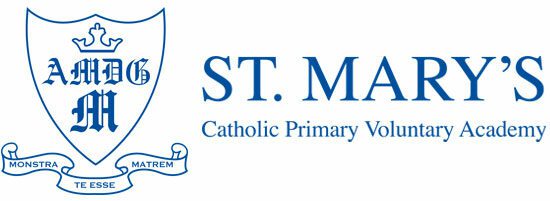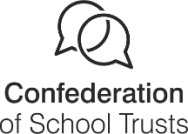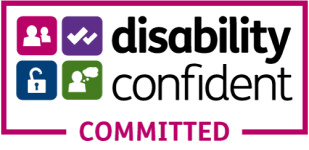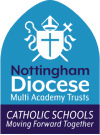Writing
Writing at St Mary’s
At St Mary’s, we believe a quality English curriculum should develop children’s love of reading, writing and discussion. We aim to inspire an appreciation of our rich and varied literary heritage and a habit of reading widely and often. We recognise the importance of nurturing a culture where children take pride in their writing, can write clearly and accurately and can adapt their language and style for a range of contexts. We want to inspire children to be confident in the art of speaking and listening so they can use discussion to communicate and further their future learning.
At St Mary’s, we teach the writing process to foster a love for writing and to provide the children with the necessary skills that they will need to enable them to thrive and contribute to the wider community. We also wish that children can express themselves creatively and enthusiastically and see writing as a possible future career.
We aim for children to leave St Mary’s with strong foundation skills that they can build upon throughout their secondary education, which can lead to a qualification or the ability to articulate clearly the meaning and purpose of their writing. We teach these skills explicitly and implicitly so that pupils understand the purpose of being able to articulate, communicate and express their views, opinions and feelings in a range of situations, openly and in a coherent fashion.
Children in EYFS have access to a range of sensory activities which promote their fine and gross motor skill development. They are inspired to make marks independently but also during guided activities. Once pupils have developed the appropriate skills and pencil grip, early letter formation is modelled and practiced using stimulating and memorable rhymes and phrases.
Children entering Key Stage One continue to learn and use their phonic knowledge to spell words throughout this key stage. From Lower Key Stage Two and onwards, children are encouraged to spell words correctly by learning them by heart or using resources such as dictionaries and word mats. Across Key Stage One and Two, children follow the programmes of study outlined in the 2014 National Curriculum, which aims to teach children to write through transcription (spelling and handwriting), composition (articulating and structuring ideas into speech and writing) and vocabulary, punctuation, and grammar.
Throughout KS1 and KS2, each unit of learning is developed to cover a range of fiction, non-fiction and poetry genres that meets the needs of the National Curriculum and the interests of the learners. To engage pupils, visual literacy will be utilised. We use Jason Wade’s Writing Cluster approach. We believe that children need to be taught a procedure that they can apply to any writing task.
STEP 1- READ IT
Reading is a great stepping stone to great writing by helping expand children’s vocabulary and demonstrating different ways of using words to generate engaging sentences and makes it easier for them to use these words in their writing. Making reading a regular part of the children’s daily routine in the classroom is a great way to encourage students to reflect and bring important skills into their writing.
The focus of this step is for the children to become familiar with the text. Great writing skills begin with reading. Children are taught how to become ‘text detectives’ and how to read as a writer. Using a model text that is specific to the genre, children identify the different writing techniques that they have been taught over the course of their writing journey. This text should be displayed in the classroom. Opportunities to read and discuss this text throughout the unit are to be made.
STEP 2-ANALYSE IT!
This is an important part of the writing process. Children will have the opportunity to ‘unpick’ the text, this will be broken down into two separate lessons. Students will have the opportunity to identify the key features that are needed to create independent writing as well as exploring the purpose, audience of the writing unit.
Grammar, punctuation and spelling.
Grammar, punctuation and spelling. will have a dedicated focus in lessons, focusing on an element of GPS.
Word & Phrase Level Grammar is organised by the 8-word classes specified in the national curriculum:
- determiners
- adjectives (and adjective phrases)
- nouns (and noun phrases)
- pronouns
- verbs (and verb phrases)
- prepositions
- adverbs (and adverbial phrases)
- conjunctions (and conjunctive phrases)
Clause & Sentence Level grammar is organised by the various sentence level structures of the National Curriculum.
- main clauses
- fronted adverbials and linking adverbs
- subordination subdivided into
- adverbial clauses (beginning with subordinating conjunctions)
- non-finite clauses (beginning with -ing and -ed verbs)
- relative clauses (beginning with relative pronouns)
- appositives
- speech
- sentence punctuation
Coordination is embedded throughout the sentence level curriculum.
STEP 3- TEACH IT!
There’s no better way to learn something than to see someone else doing it first. Give the children easy and frequent access to model texts and model of excellence examples each time you introduce a new form of writing or narrative. Reading model texts together before writing can help spark inspiration and allow children to identify new vocabulary and style choice. Getting the ideas to write something good can be difficult, so having an example to inspire them can work wonders. Primary school children often have a limited life experience, so giving them a helping hand to come up with something new and pick up a new writing style can help. Teach how to use literary devices appropriate to the text using modelled/shared writing.
Use the I/we /you model.
- The teacher models how to do it’
We- The teacher leads guided/shared session with children
You- The children complete own example
STEP 4 – PLAN IT!
Planning is an important aspect of writing. Planning is useful because it will organise thoughts and priorities the way information is present. Planning templates, story mountains and spider diagrams can all be used to support the planning process.
STEP 5- WRITE AND EDIT IT
This is an opportunity for children to apply their learning with a second attempt at completing an extended piece of work within the unit. Children should independently apply the skills they have been taught over the unit of work. Word mats and working walls may be referred to by the children. When completing their end piece of writing in the cluster, children are to regularly edit their work.
STEP 6 – PUBLISH IT!
A finished piece of writing should be completed twice per term. This can be presented on bordered paper ready for display.











